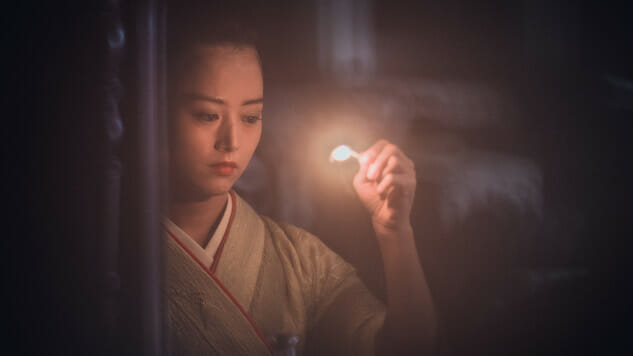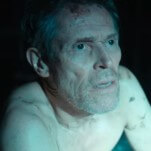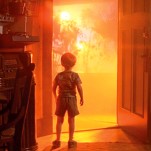The Terror: Infamy: Rich, Immersive, and Full of Horror that Can’t Be Ignored
There are horrors of worlds beyond ours, and horrors of our own making.
Photos Courtesy of AMC
There is no shame, in good times or bad, in craving light, escapist fare. If you need less Chernobyl and more Holey Moley in your life, that’s fine. And if that is you, then there’s good news and bad news with regard to Infamy, the evocative, chilling second season of AMC’s anthology series, The Terror. So here’s the good news: Showrunner Alexander Woo and his team have crafted a hell of a ghost story (or, more accurately, a kaidan), continuing the first season’s knack for mixing together mythology, ambiguity, genre, and striking imagery to chill the bones. If you want a good scare, you’re in great shape. The bad news—and it’s only bad news if you don’t have it in you to confront the horrors of the real world—is that no ghost could be more unsettling than the historical and depressingly everyday nightmares that The Terror has in store.
That first season of The Terror centered on the crews of ships HMS Erebus and HMS Terror, each lost on an expedition to find the Northwest Passage in the 19th century. That they were lost is a matter of historical record, but their more precise destinies are explored in that exemplary season in horrifying fashion. As with the first go-round, Infamy approaches documented history with an eye toward exploring its ugliest corners and crevices, using terror (and the genres in which that emotional state thrives) like a pipe-cleaner. Such a primal response can reach places your average emotional response perhaps can’t so easily reach. In this case, the historical event being explored is an American (and sadly timely) one: the internment of Japanese Americans in camps during the Second World War.
In the first two of the six episodes provided to critics, we watch as this shameful chapter in U.S. history starts to come together, the tension slowly building, the paranoia, racism and xenophobia swelling like a catastrophic wave. We track it through the growing fear and concern of the Nakayama family, who are soon evicted from their home on Terminal Island and forced into a camp: Chester (Derek Mio), the young son hoping for a more cosmopolitan existence; Henry (Shingo Usami), the patriarch struggling to keep his pride and keep his family safe and fed at the same time; Asako, the mother trying to bridge the gap between them while barring dark forces from the door. There are other friends, neighbors and loved ones—notably Yamato-san (George Takei, excellent), a person of long and potent memory; Amy (Miki Ishikawa), clever and resourceful; and Luz (Cristina Rodlo), a young Mexican American woman and a fellow student at Derek’s college, whom he has been romancing—but the figure who eats up the most energy is the one to whom the Nakayama family’s ties are both non-existent and endless.
That would be the character played by Kiki Sukezane (Westworld). Who or what she is can’t really be put into words—to spell it out would be to spoil what little we learn of her in the first five episodes. (The compelling sixth hour, “Taizo,” tells us much more, but not a word of it will be revealed here.) Suffice it to say that Sukezane’s character is somehow tied up in the darkness that characters like Asako attempt to hold at bay, with motives that remain mysterious but never absent. Sukezane’s physical performance is almost hypnotic in its specificity and strangeness, seemingly changing for whomever she encounters or the room she enters. It’s an instant classic horror performance, certainly in the television realm if not all mediums. She acts with her fingers.
-

-

-

-

-

-

-

-

-

-

-

-

-

-

-

-

-

-

-

-

-

-

-

-

-

-

-

-

-

-

-

-

-

-

-

-

-

-

-

-








































